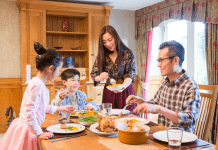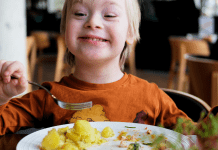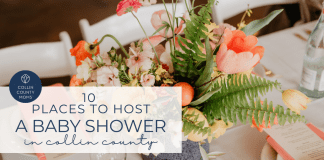The holiday season is a time for celebrating traditions and sharing those traditions with family and friends. Our most significant memories around this time tend to center around how we celebrated the holidays growing up, and it is the main reason why we pass these traditions down from generation to generation. We want our kids to have the same experience that we had, or perhaps to experience the things we did not.
Traditions and celebrations are also a way to hold onto the heritage and culture of our family groups. So even though Christmas, Hanukkah, Kwanzaa, and any other holiday celebrations that occur in the month of December are different, the reason for celebrating them year after year is still the same.
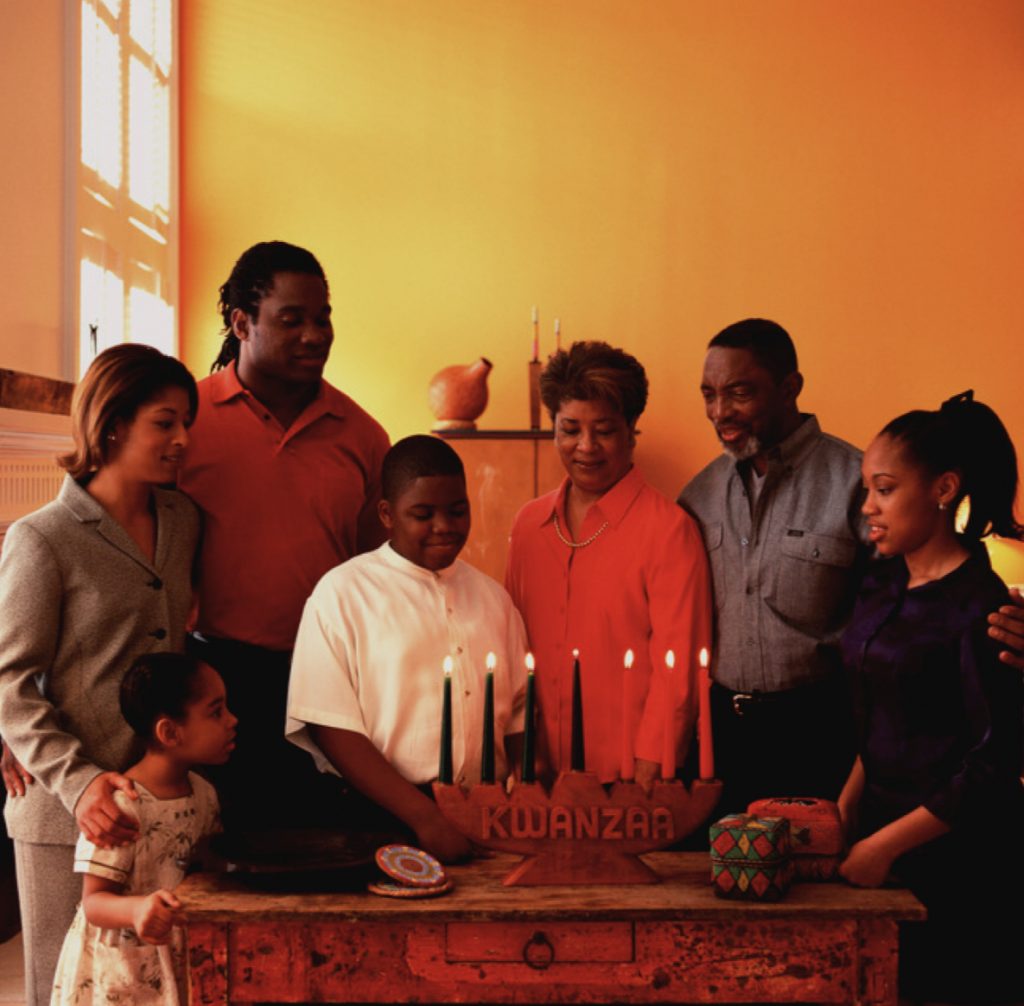
What Is Kwanzaa?
Kwanzaa was established in 1966 by Dr. Maulana Karenga, who at that time was a professor and chairman of Black Studies at California State University. He desired to find a way to bring African Americans together, after the Watts Riots occurred in Los Angeles. This was also during the Civil Rights era, where African Americans had much difficulty in gaining equal rights and faced much discrimination and racism in their country of origin, the United States of America.
Because of this, many African Americans intentionally sought out ways to empower themselves and their community by establishing customs and traditions and celebrations. Dr. Karenga began to research traditional African harvest celebrations. His research led him to combine several aspects of harvest celebrations among African tribes, specifically the Ashanti and Zulu tribes, to create the celebration we know today as Kwanzaa. Kwanzaa is primarily celebrated in the United States from December 26-January 2.
Kwanzaa comes from the phrase “matunda ya kwanza” which means “first fruits” in Swahili. The celebration traditionally involves songs and dances, African drums, storytelling, poetry reading, and a large traditional meal. Each night of the seven nights, the family will come together and light one of the candles on the Kinara (candleholder) and then one of the seven principles is discussed.
The Kinara consists of three green candles, three red candles, and one black candle. The black candle is lit first and the principle of “umoja” (unity) is discussed first. The principles, called the “Nguzo Saba” (seven principles in Swahili), are values of African culture which contribute to building and reinforcing community among African Americans. There are also seven basic symbols which represent values and concepts reflective of African culture. An African feast, called a Karamu, is held on December 31.
Source: History: What Is Kwanzaa
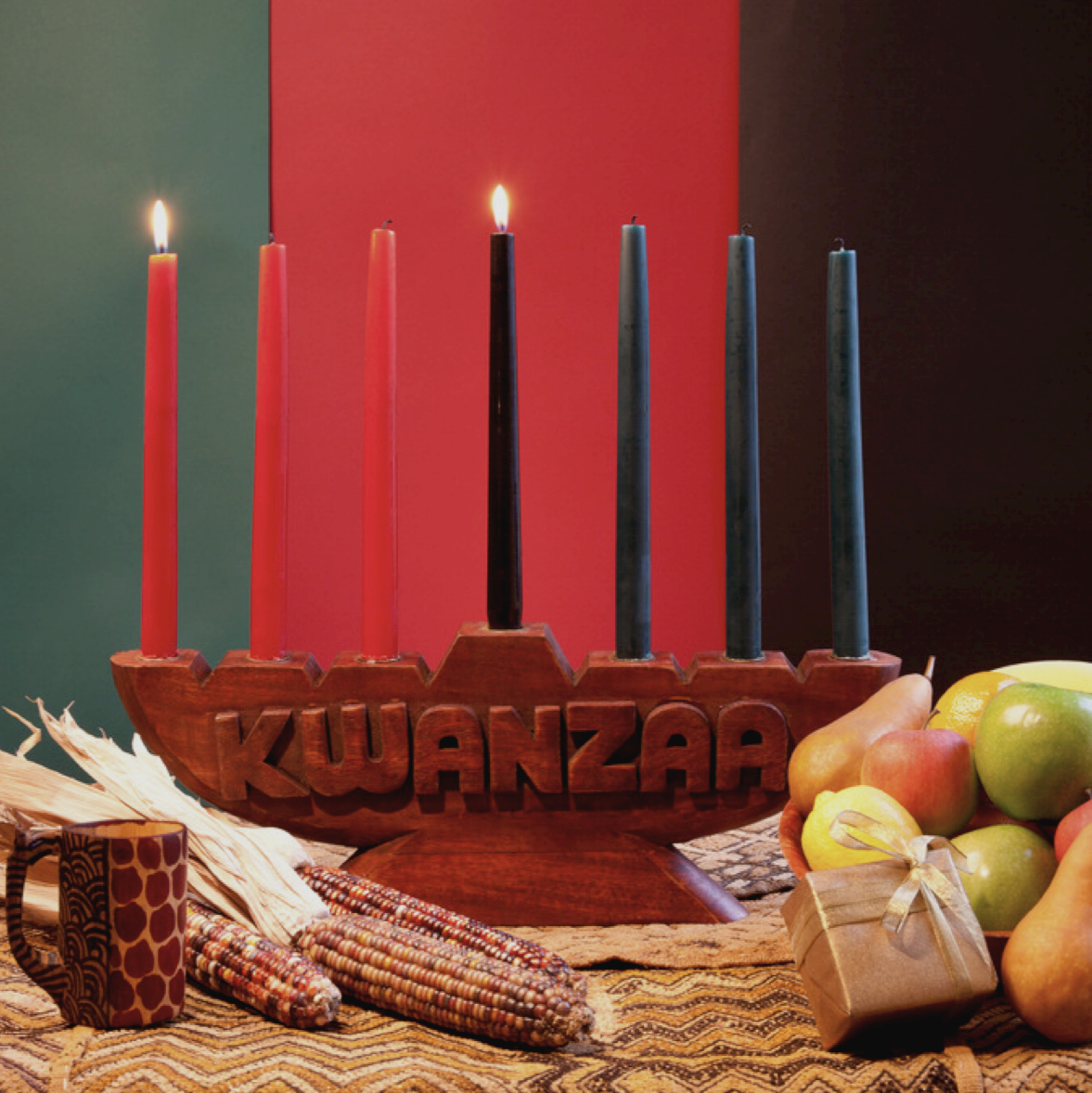
Seven Principles & Seven Symbols of Kwanzaa
Seven Principles
Each night of Kwanzaa, a candle is lit and a principle is discussed:
- Unity: Umoja
To strive for and maintain unity in the family, community, nation, and race. - Self-Determination: Kujichagulia
To define ourselves, name ourselves, create for ourselves, and speak for ourselves. - Collective Work & Responsibility: Ujima
To build and maintain our community together and make our brother’s and sister’s problems our problems and to solve them together. - Cooperative Economics: Ujamaa
To build and maintain our own stores, shops, and other businesses and to profit from them together. - Purpose: Nia
To make our collective vocation the building and developing of our community in order to restore our people to their traditional greatness. - Creativity: Kuumba
To do always as much as we can, in the way we can, in order to leave our community more beautiful and beneficial than we inherited it. - Faith: Imani
To believe with all our heart in our people, our parents, our teachers, our leaders, and the righteousness and victory of our struggle.
Seven Symbols
- Mazao, the crops (fruits, nuts, and vegetables) Symbolizes work and the basis of the holiday.
- Mkeka: Place Mat The mkeka, made from straw or cloth, comes directly from Africa and expresses history, culture, and tradition.
- Vibunzi: Ear of Corn The stalk of corn represents fertility and symbolizes that through the reproduction of children, the future hopes of the family are brought to life.
- Mishumaa Saba: The Seven Candles Candles are ceremonial objects with two primary purposes: to re-create symbolically the sun’s power and to provide light.
- Kinara: The Candleholder The kinara is the center of the Kwanzaa setting and represents the original stalk from which we came: our ancestry.
- Kikombe Cha Umoja: The Unity Cup This special cup is used to perform the libation ritual during the Karamu feast on the sixth day of Kwanzaa.
- Zawadi: Gifts On the seventh day of Kwanzaa, meaningful gifts are given to encourage growth, self-determination, achievement, and success.
How We’re Celebrating Kwanzaa as a Family
A few years ago, our family decided to start incorporating Kwanzaa in our holiday traditions. We attended our local library’s Kwanzaa celebration where we learned more about the history of Kwanzaa, discussed the seven principles, listened to storytelling from “Harriet Tubman” about the Underground Railroad, and enjoyed a meal of soul food with the other attendees. Two years later, my oldest daughter still talks about the experience and how much fun she had.
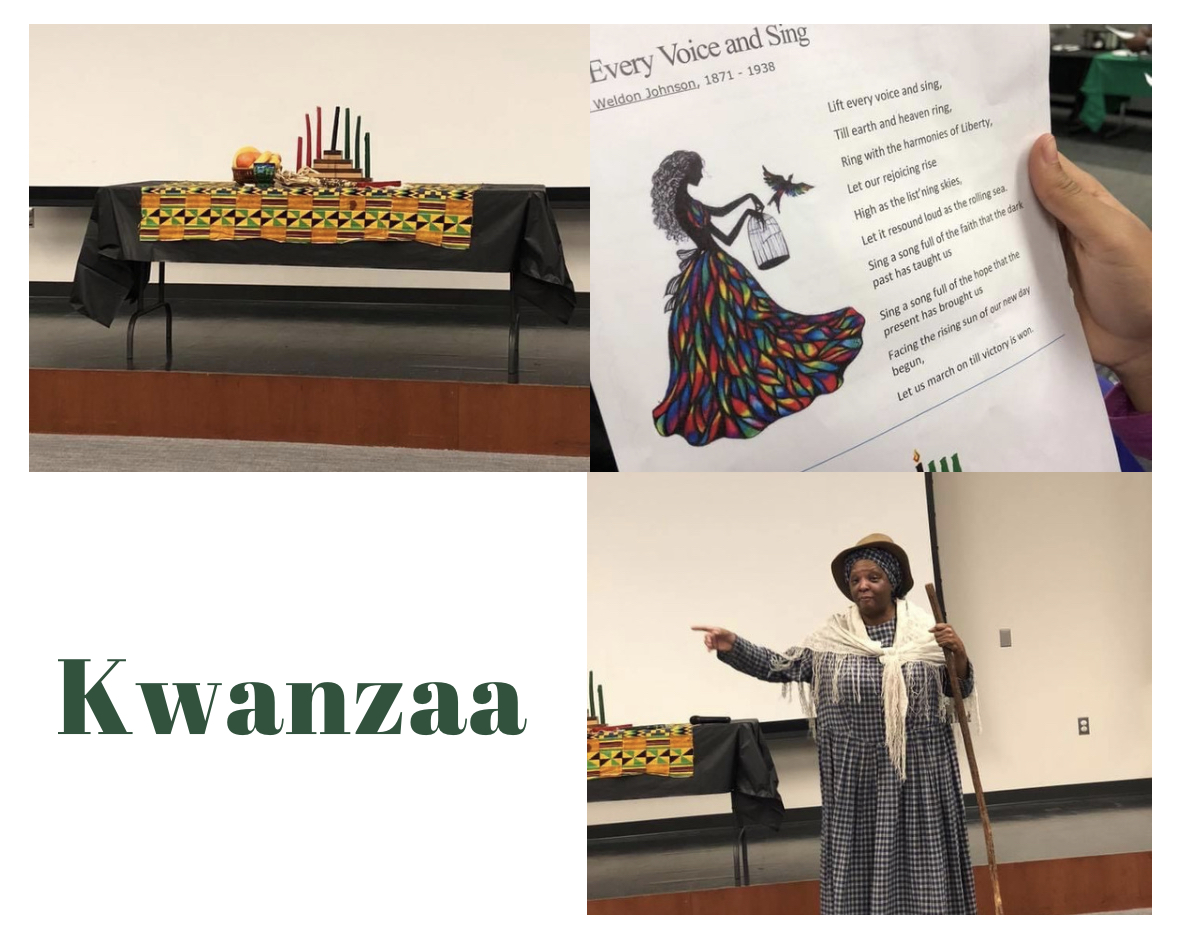
This year, due to the pandemic, we will be focusing on the at-home aspects of celebrating Kwanzaa as a family. We will light the seven candles for each night of Kwanzaa and discuss the seven principles. I look forward to the discussions my husband and I will have with our teen, as her interest around her heritage and racial culture has peaked significantly this year. I also plan to read some books especially for our four-year-old, about the history of Kwanzaa to incorporate the storytelling piece of Kwanzaa. For the meaningful gifts, we plan to give each girl an age-appropriate gift that represents the elements of Zawadi.
One realization that all the chaos and uncertainty of 2020 has given me is the importance of establishing and maintaining traditions with my children. I hope that celebrating Kwanzaa as a family will be a holiday tradition that my girls will incorporate into their holiday traditions when they are older…and for generations of our family to come.







